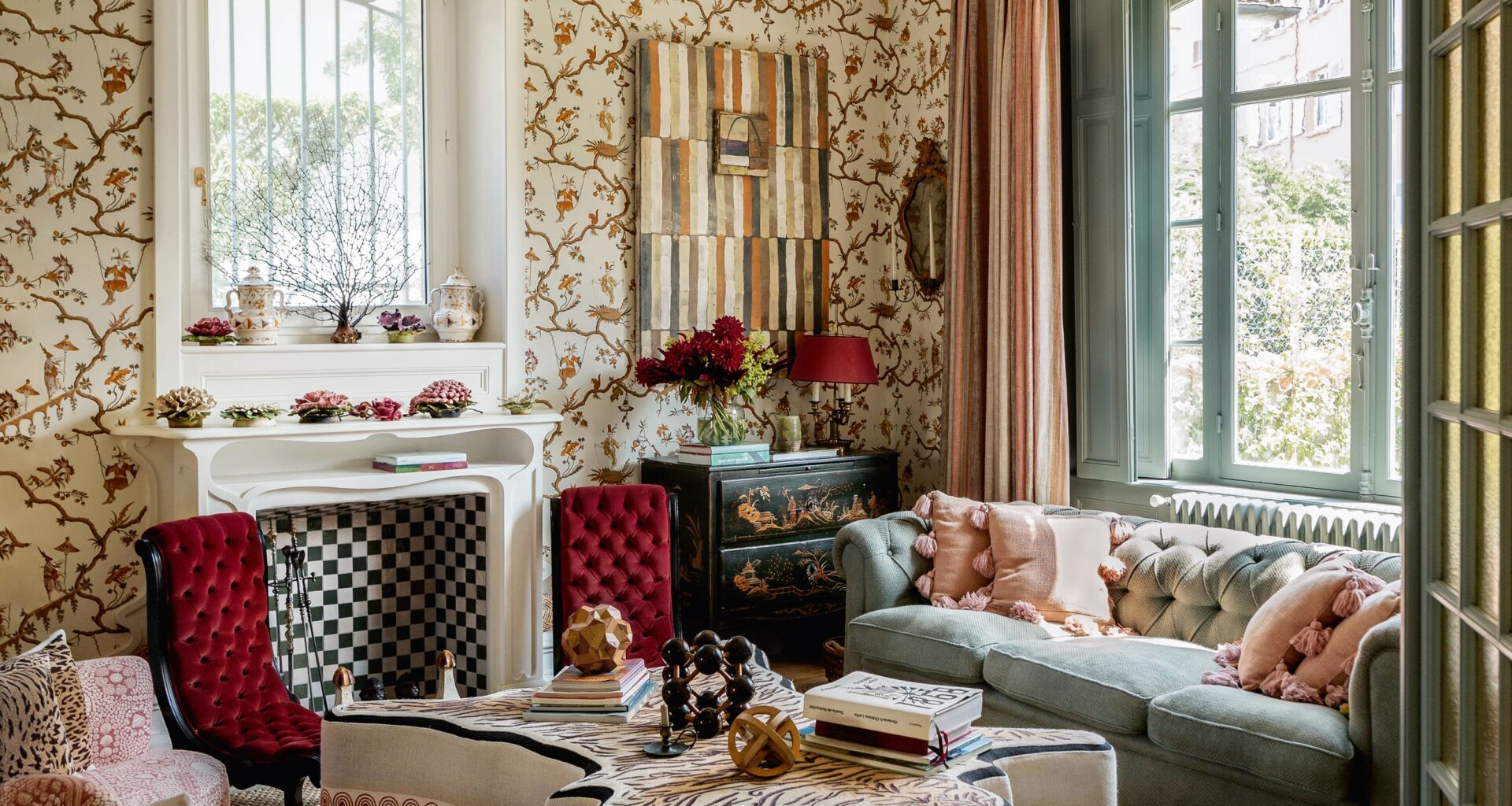Marta with her niece, Pino, 4, and two older daughters, Clara, 7, and Blanca, 8, on a ‘Mila’ runner by Roger Oates Design and A Rum Fellow.
© Anna Malmberg
The best holidays make you feel a million miles from home. But the best holiday homes? Less holiday, more home ought to be the mantra. If you need convincing, Marta de la Rica’s house in Biarritz should do the trick. When the Spanish interior designer bought this villa in 2020, the last thing she wanted was ‘for it to feel like a summer house. Perhaps that is surprising, since Marta has summered in Biarritz since she was a child, when her father fell in love with the Basque seaside town. He still has a house here, as well as the restaurant-cum-florist-cum-antiques emporium Gaztelur in a former house on a country estate, six miles inland. But from the outset, Marta was clear that, if she was going to buy a house here, she would use it – for high days and holidays, certainly, but also for weekends away from Madrid, where she lives with her husband and three daughters.
For many years, Marta’s father owned a large house two doors down from here. Later, he downsized to another just behind it, and Marta and her brothers took over his old villa, uniting the gardens into one. It was, she says, great fun, but she always had one eye on a place of her own.
The house’s charming fairy-tale aesthetic is unusual for this part of France.
© Anna Malmberg
She had long admired this confection of a house, built for a Russian at the beginning of the 20th century, when Biarritz was deluged with European aristocrats hot on the silk-slippered heels of Eugénie de Montijo, Empress of France, whose husband, Napoleon III had built her a palace there. With its steeply pitched roofs, tessellated timber gable trusses and decorative bargeboards, it feels unusual in this part of the country, having more of the storybook appearance of buildings in northern French towns like Deauville or Honfleur, rather than the Art Deco drama or Belle Epoque grandeur associated with Biarritz.
When, after the death of the previous owner, it became available to buy, there was competition. It was so tight that the estate agent asked for sealed bids. Happily, Marta won. Finally, after a year and a half, she had the house. ‘It was horrible,’ she says, with a laugh. ‘The garden was a forest, there was no electricity, and it was full of stuff, having been lived in by a hoarder. It took a month to clear it out.’ But, she adds, ‘At the same time, it had such a soul: romantic, dramatic and ever so slightly eccentric. I realised this was the path I had to follow. I needed to tell the story of the house while bringing in a breath of fresh air.’
Antique furniture is teamed with an ottoman designed by Marta and chairs covered in Fermoie’s ‘Shell Grotto’. The ‘Mikado’ wallpaper from Pierre Frey showcases a painting by Mirco Marchelli.
© Anna Malmberg
Marta is known for her ability to create spaces perfectly suited to modern life that feel already deeply lived in, conjuring rich comfort out of seemingly disparate styles and blending new pieces with antiques. ‘Layers and layers. And an understanding that houses are not static’, she says when asked the key to a good scheme. ‘Oh, and having fun.’
